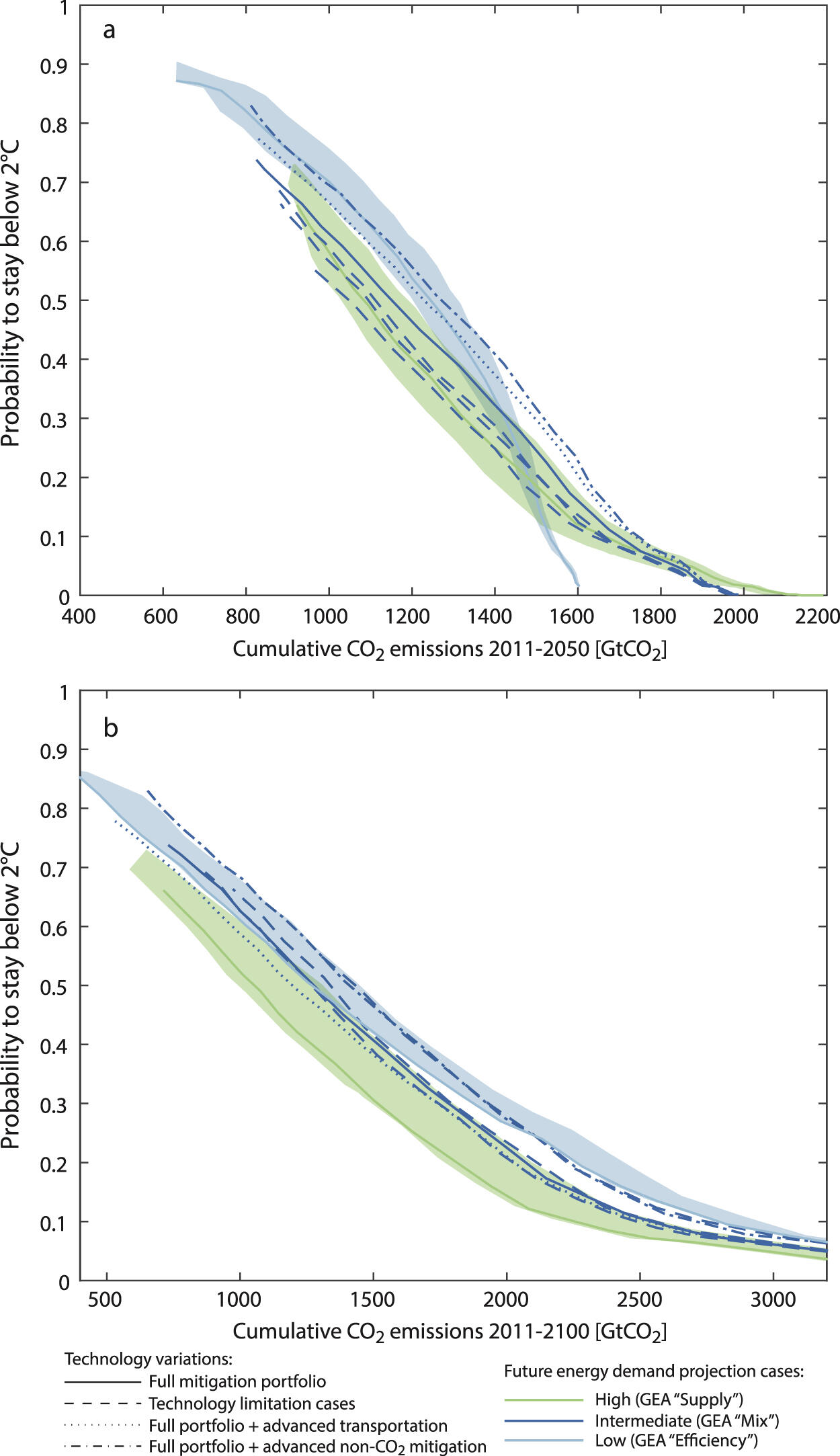Mitigation choices impact carbon budget size compatible with low temperature goals

Authors: Joeri Rogelj, Andy Reisinger, David L McCollum, Reto Knutti, Keywan Riahi, and Malte Meinshausen
Abstract: Global-mean temperature increase is roughly proportional to cumulative emissions of carbon-dioxide (CO2). Limiting global warming to any level thus implies a finite CO2 budget. Due to geophysical uncertainties, the size of such budgets can only be expressed in probabilistic terms and is further influenced by non-CO2 emissions. We here explore how societal choices related to energy demand and specific mitigation options influence the size of carbon budgets for meeting a given temperature objective. We find that choices that exclude specific CO2 mitigation technologies (like Carbon Capture and Storage) result in greater costs, smaller compatible CO2 budgets until 2050, but larger CO2 budgets until 2100. Vice versa, choices that lead to a larger CO2 mitigation potential result in CO2 budgets until 2100 that are smaller but can be met at lower costs. In most cases, these budget variations can be explained by the amount of non-CO2 mitigation that is carried out in conjunction with CO2, and associated global carbon prices that also drive mitigation of non-CO2 gases. Budget variations are of the order of 10% around their central value. In all cases, limiting warming to below 2 °C thus still implies that CO2 emissions need to be reduced rapidly in the coming decades.
Link: http://iopscience.iop.org/article/10.1088/1748-9326/10/7/075003
Citation: Joeri, R., R. Andy, L. M. David, K. Reto, R. Keywan and M. Malte (2015). "Mitigation choices impact carbon budget size compatible with low temperature goals." Environmental Research Letters 10(7): 075003.